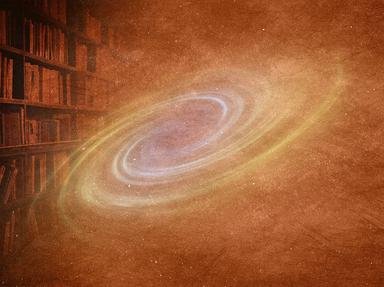Quiz Answer Key and Fun Facts
1. Antonj van Leeuwenhoek spent years grinding lenses and refining microscopes and wound up literally changing the way we see the world. When he used his microscope to take a close look at lake water in the 1670s, he saw scores of what he called "animalcules". What would we call them today?
2. In 1747, James Lind performed one of the first-ever clinical trials, aboard the ship HMS Salisbury. After two months at sea, a daily ration of two oranges and a lemon cured two sailors of what deadly illness?
3. In the 1770s, Antoine-Laurent de Lavoisier turned his attention to the problems of rust and combustion. His experiments established that something in the air -- oxygen -- was required to support both rusting and burning, disproving what widely held theory?
4. In the early nineteenth century, scientists struggled to find a link between two intriguing physical phenomena. In 1820, while delivering a lecture, Hans Christian Oersted found that link using a compass needle, a wire, and a battery. What two fields of study did Oersted's experiment unite?
5. In 1859, Louis Pasteur went to the lab with two glass flasks filled with a meat broth. The flasks had long, curved necks that allowed air -- but not dust -- to enter. Pasteur boiled the broth in both flasks, then broke off the neck of one -- and, days later, only the broth in the broken flask was clouded with microbial growth. What widespread theory did Pasteur disprove with this simple experiment?
6. The nature of heredity -- how parents pass along biological traits to their offspring -- has long been an object of scientific interest. Do the traits of the parents sort of blend together as the traits of their offspring? If a parent's body changes over time, can its offspring inherit the changes? In the 1860s, Gregor Mendel showed that neither of these hypotheses was true, founding modern genetics. Which test organism did Mendel study?
7. In 1887, Albert Michelson and Edward Morley conducted perhaps the most famous failed experiment of all time. At the time, it was thought that the Earth traveled through a medium called the "luminiferous ether," but the two physicists couldn't find any evidence of it with their high-precision optical setup. Why was the ether thought to exist in the first place?
8. In 1909, Ernest Rutherford, Hans Geiger and Ernest Marsden directed alpha particles at a thin gold foil. Every now and then -- maybe one in 20,000 times -- the foil deflected the alpha particle straight backward. "It was almost as incredible," said Rutherford later, "as if you fired a 15-inch shell at a piece of tissue paper and it came back and hit you." What had his team discovered?
9. By the 1940s, there was mounting scientific evidence that it's the DNA molecule that allows genetic information to pass from one generation to the next. But it was hard to truly believe this without knowing how the molecule was structured. That's where Rosalind Franklin came in. She and her group used what kind of penetrating radiation to illuminate the issue?
10. In 1964, radio astronomers Arno Penzias and Robert Wilson were troubled by a persistent noise in their telescope. The noise was in the microwave frequency range, and it was the same no matter where they pointed their telescope. It didn't even change between night and day! This "noise" turned out to be an eloquent support for what major astronomical theory?
Source: Author
CellarDoor
This quiz was reviewed by FunTrivia editor
rossian before going online.
Any errors found in FunTrivia content are routinely corrected through our feedback system.

